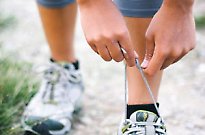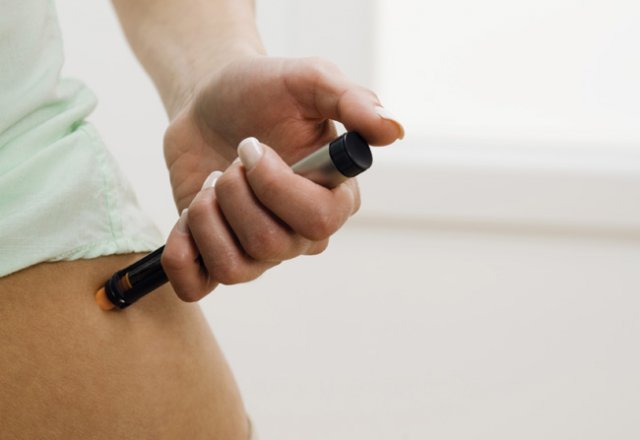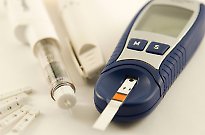
Living with type 1 diabetes

3 readers share their stories
Adrian Houghton talks to three women about how diabetes affects them and how it can be managed.
Type 1 diabetes is an autoimmune disease that effects roughly 123,000 people in Australia.
It is prevalent in childhood but can be diagnosed at any age, with type 1 sufferers’ immune systems destroying beta cells within the pancreas and restricting the body’s ability to produce insulin.
However, type 2 diabetes is prevalent in around 90 per cent of cases, receiving greater attention in the media, and has subsequently contributed to decades of obscurity for type 1 victims.
Three women affected by the rare disease cannot bare the unimportance that emanates from the general public in relation to type 1, and are exercising their freedom of speech to eradicate the confusion and start the conversation.
That ‘conversation’ relates to changing the name of type 1 diabetes for a fourth time in its history.
Amanda Lenehan, mother-of-three
Amanda Lenehan, 40, a mother of three children, created the petition after her angst about grave misconceptions between type 1 and type 2 diabetes becoming increasingly overbearing.
The online petition was created in April 2013, and already has over 2,700 signatures.
IDS (islet destruction syndrome), ABCD (autoimmune beta cell degeneration) or pancreatic failure are some of the proposed name changes.
Amanda’s four-year-old son, Issac, endures the hardship of type 1, something that has changed the family’s life forever.
“Issac was 23 months at the time of his diagnosis – it was devastating,” she said.
For such a young child, the reality of type 1 sets in immediately when insulin and dietary requirements become the single most important thing in their life.
“It’s all about carbohydrates,” Amanda said. “Whenever Isaac eats, we have to test his blood glucose, calculate the carbohydrate content in his food by weighing it, and then give him the correct amount of insulin.
“At home, we always have the scales on the bench. If he wants a glass of milk we measure it, if he wants an apple, we weight it, and if he wants a biscuit, I have to look at the packet to work out the amount of carbohydrates.”
Gina Pash, antique dealer from Bowral
A lady who’s had to endure the complications of type 1 first-hand, is Bowral resident Gina Pash.
Diagnosed at the age of 12, the antique dealer’s life was drastically changed forever.
“I used to say to people that I took it on as a little solider, and unlike some kids who have their parents do their insulin for them, I went straight into it myself, doing my own insulin and my own injections,” she said.
During her teenage years, Gina would often find herself suffering from the wrath of public discrimination.
“Socially I was always a bit embarrassed about my diabetes,” she said. “I went through the AIDS era of syringes and drug taking. There I was injecting myself with syringes and many times I was asked not to do it in public.”
That misconception during such an age of moral panic could be forgiven, but the current climate of mistaking type 1 for type 2 diabetes should not be excused.
Media outlets are continually ignoring the simple attribution that would differentiate the two and engineer more clout among the general public.
Gina believes the confusion is increased by news-reporting negligence time and time again.
“If you exercise more and avoid junk food you’ll avoid diabetes, but we want the media to say if you exercise more and avoid junk food you’ll avoid type 2 diabetes,” she says. “The confusion spreads throughout the community, and I find it absurd.”
The diet of a type 1 diabetic is no different to any other young child or adult who tries to eat healthy.
Since the insulin pump became available in the 1990’s, type 1 diabetics can eat as they like and when they like.
Essentially it means that the food they consume is compensated by a dose of insulin.
“Most people with type 1 operate on some sort of exchange plan; in other words they know just how much insulin is needed for a medium bowl of rice, pasta, a piece of toast or a fresh piece of fruit,” Gina says.
“So an average day in the life of a type 1 involves a lot of calculation.”
Despite Gina’s healthy eating patterns she faces an anxious wait for a new kidney,following kidney failure due to her long-term type 1 complications.
Kristi Gale, stay-at-home mum
Another woman who faces similar battles of her own is Kristi Gale.
The stay-at-home mum faces life-threatening complications from the incurable type 1.
Diagnosed at the age of 11, the 36-year-old Sydney resident has had roughly 52,000 finger pricks and over 60,000 insulin injections in her lifetime. And, like Gina, she believes that an old adage is pertinent when it comes to monitoring type 1.
“The key to keeping healthy is everything in moderation,” Kristi said.
“What’s surprising is that I’m probably better off having some chocolate than I am eating potato or white rice.
“Everybody has a body that reacts differently, so for some people they need more insulin and others need less.
“With my body I find the less insulin I have, the better my body responds.”
Kristi is also unwavering in her support of promoting the petition and changing the media perception.
“If reporting is going to be done, medical information is going to be passed on, and they need to be very clear to the general public,” she says.
“It’s important that those who don’t have an in-depth understanding or don’t have a friend or family member who have diabetes.”
Kristi’s relationship with husband Eric is awe-inspiring after she informed her prospective life partner that the future could present significant difficulties.
However, Eric’s decided to commit to Kristi despite her ongoing complications.
“I would have to say Eric is one of a kind,” she says. “We didn’t meet until after my 30th birthday, and from that moment onwards he basically took everything on board.”
After spending two years together, Kristi informed Eric that they might not be able to conceive a child together.
“I basically said to him that these are the complications I have and that things could be different in the future, and one of them being that I potentially couldn’t have a child,” she says.
“I gave Eric an out and said that you’d be better off with someone who doesn’t have all these issues – I was scared that I could be reliant on him.”
Instead, the pair have a beautiful baby boy named Harry, who they regard as “our gift from the universe”.
The saturation of type 2 diabetes media is overwhelming type 1 and understating its seriousness.
Thankfully, for sufferers there are three women trying their utmost to rouse opinion nationwide.
“Change the perception, change it in the media, change it in the public and even with some general practitioners, who don’t understand the differences,” Amanda says.
The lack of urgency is palpable, and it’s about time for type 1 to receive the awareness it deserves.
What to eat
To help manage type 1 diabetes, meals need to be regular and spread out during the day and based on high-fibre carbohydrates like beans, lentils, vegetables and fruit.
• Snack on nuts
• Eat more fish
• Use alternative sweeteners such as Stevia that instead, in small amounts, has anti-diabetic qualities.
For more information on type 1 diabetes, visit JDRF, Australian Diabetes Council and Twice Diabetes
Forums:


